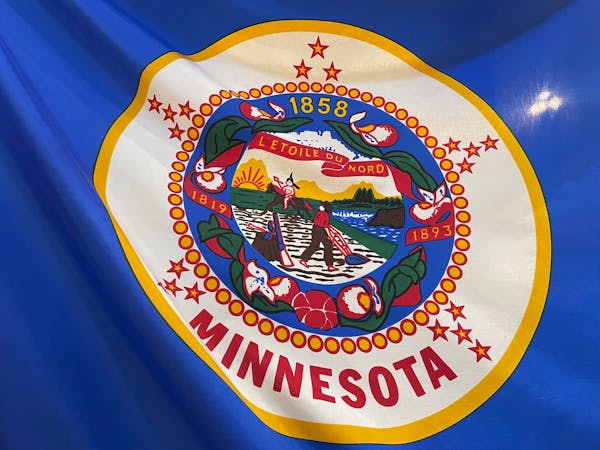Kate Beane understands better than most that history is messy.
She has a doctorate in American studies and spent years as director of Native American Initiatives for the Minnesota Historical Society. A Dakota woman, Beane also dug into her own family history for her thesis project, including her connection to Seth Eastman, the U.S. Army captain and painter who drew the controversial image that would eventually become Minnesota's state seal.
That seal — along with the state flag — will soon get a new look thanks to the State Emblems Redesign Commission. As one of 13 voting members of that group, Beane knew the process would inevitably touch on her own complicated family story.
"I spent a lot of years researching and documenting that history," she said. "It's been an interesting process to come to terms with that relationship."
During his first posting at Fort Snelling in 1830, Seth Eastman married Stands Sacred, the daughter of a Dakota chief. They had one daughter together named Winona before he was reassigned, declaring the marriage over. Winona married a Dakota man and had five children with him, including Charles Eastman, who was Beane's grandmother's great-uncle.
Years later, Seth Eastman returned to Fort Snelling with a new wife and family and became a celebrated documenter and painter of the land and Native American life in Minnesota.
"That history is very complicated and troubling and painful, but at the same time there's this rich legacy of this painter who documented the land and helped us see the way this place looked before the cities were built," said Beane. "There's a lot to learn from that."
Seth Eastman was commissioned by territorial delegate Henry Sibley to improve upon some sketches for the state seal. When Sibley became governor, he bypassed the Legislature to create a version of the seal largely adapted from Eastman's drawing, said Bill Convery, director of research with the Minnesota Historical Society.
The seal was placed prominently in the center of the state's flag when it was created in 1893. The image shows a Native American man retreating on horseback into the background while a white man plows a field in the foreground with a rifle and ax nearby.
The commission was created by the Legislature last session to reconsider the design of the flag and the imagery in the state seal, which has been the source of controversy for decades.
Seth Eastman's second wife, Mary Eastman, made the intent of the imagery clear in a poem she wrote about the state seal: "Give way, give way young warrior, thou and thy steed give way ... the rocky bluff and prairie land, the white man claims them now."
The seal's imagery is an "implied celebration of manifest destiny," said Convery, who dug into the history of the flag and the seal during a recent meeting of the commission.
That poem and other writings from Mary Eastman about Dakota life during the family's time in Fort Snelling have long troubled Beane, who encountered them during her research.
"That manifest destiny narrative is really heightened and elevated within the current seal, and I'm the direct descendant of the person who helped to create that," Beane said. "At the same time, I'm a direct descendant of the people who were removed and erased physically from this place."
Beane, now executive director of the Minnesota Museum of American Art, has experience with pushing to change names and symbols.
She was one of the leaders behind the effort to restore the Dakota name to Bde Maka Ska and remove references to Lake Calhoun, which was named after John Calhoun, a proponent of slavery and of Native American removal. She was appointed to the commission by Lt. Gov. Peggy Flanagan as a member of the Capitol Area Architectural Planning Board.
Beane said her Dakota ancestors are not appropriately represented in the original design of the state seal and flag, which is why it's important that several representatives from tribal communities are included in the membership of the commission.
Facing a Jan. 1 deadline to come up with a new design, the group holds its third meeting Wednesday and plans to ask for submissions from the public.
"In a lot of ways I don't see it as something I can opt out of," she said. "We're still here today and that we have a lot to contribute, even if our grandparents' voices and perspectives weren't always documented."
Mississippi lawmakers expected to vote on Medicaid expansion plan with work requirement
Ethics committee dismisses complaint against Missouri speaker

